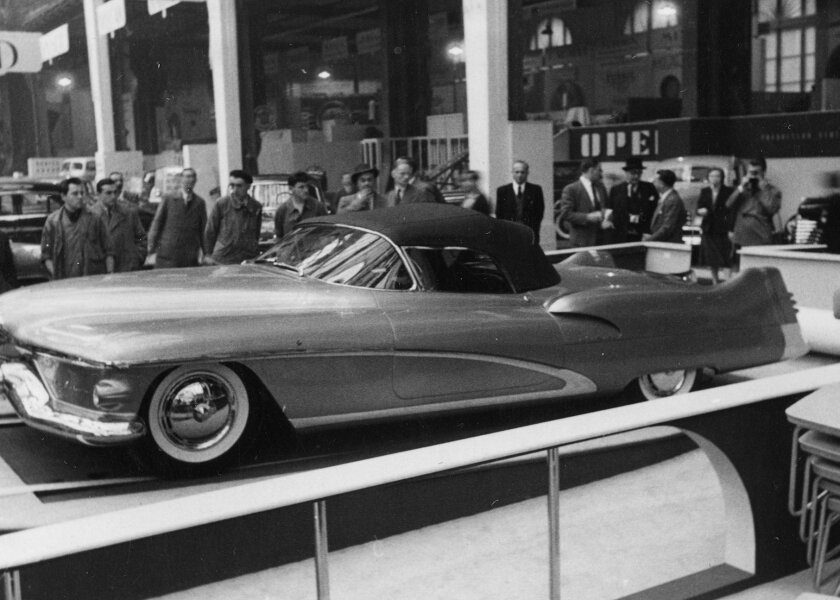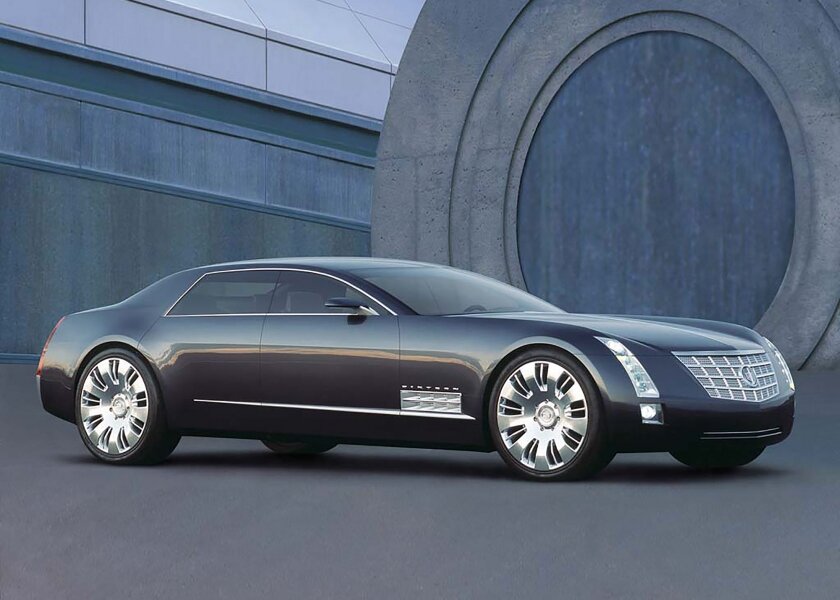1951 Le Sabre Concept




Specifications
Engine: 215 C.I. V8 (3.5L)
Horsepower: 335 @ 5200 RPM
Torque: 381 ft lbs @ 3650 RPM
Transmission: 4 speed automatic
Front Suspension: unequal length A-arms, torsion bars, tubular hydraulic dampers Rear Suspension: DeDion axle, semi-elliptic leaf springs, tubular hydraulic dampers
Weight: 3799 lbs
With jet propulsion technology becoming prevalent in the airplane industry, Harley Earl set out to create a concept car which applied these advancements to a futuristic car. While the concept’s design and engineering advancements were clearly drawn from jets, the Le Sabre was influenced by the North American Aviation F-86 Sabre fighter more specifically. Earl’s 1938 Buick Y-Job, the industry’s first concept car and his personal vehicle for a number of years, was beginning to look dated to him, giving
him. His design team began clay modeling a sleek and futuristic design, and GM’s engineering team began to build technologies the public had never before seen on road cars.
Aircraft design elements are obvious at first look of the car, but many of these elements are indeed functional. Front and center is the oval shaped jet intake, designed to resemble jet design and functioned as the Le Sabre’s engine intake. Headlights in front were completely hidden, though at a flip of a switch, grills flipped backwards to reveal the headlights. The wrap around windshield was another nod to airplanes, as was the single tail light at the rear, which was designed to resemble a lit afterburner.
The Le Sabre’s interior was as equally impressive. A rain sensor was connected to the car’s convertible top; when it sensed rain, the top and windows were automatically raised to keep the occupants dry. Heated seats were also installed, a feature which wasn’t implemented into production cars for at least another two decades.
Futuristic technologies continued under the hood. Powered by a 3.5 liter (215 c.i) supercharged V8, the Le Sabre used produced 335 horsepower and 381 lbs/ft of torque. With it’s cast aluminum engine, the Le Sabre also used a unique dual carburetor design. One carburetor fed the engine normal fuel, for general driving, and the other supplied methanol, to increase power under heavy throttle.
The futuristic advancements you couldn’t immediately see are perhaps the most impressive. To add strength and save weight, body panels of the Le Sabre were made of cast magnesium, with the floorboards made up of honeycomb aluminum. The Le Sabre also came equipped with a piece of technology seen today only in the most advanced race cars. Underneath the car are four hydraulic jacks, used to change a tire or perform simple service, and it’s said that this technology was taken by Formula 1 years later.
The Le Sabre serves as a statement in design language, and also intuitive use of advanced technologies. The car was finished as a fully functioning road legal car, which of course prompted Harley Earl to use the concept as his daily-driver for a few years after its completion. Images surfaced of the Le Sabre and Y-Job in Earl’s driveway, showing that he enjoyed them interchangeably.













